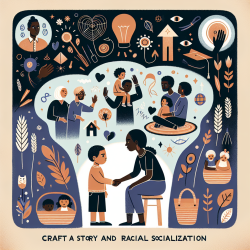Introduction
The intersection of mental health and substance use among LGBTQ+ youth is a critical area of focus for speech-language pathologists and other healthcare providers. The study titled "Factors Affecting Painkillers, Sedatives/Hypnotics, Nicotine, and Unhealthy Alcohol Use Among Gay and Bisexual Men in Taiwan" provides valuable insights into the multidimensional factors influencing substance use in this population. Understanding these factors can inform the development of targeted interventions and support systems within online therapy platforms like TinyEYE, which aim to improve outcomes for LGBTQ+ youth.
Key Findings from the Research
The study identifies several factors associated with substance use among gay and bisexual men in Taiwan, including:
- Victims of traditional homophobic bullying in childhood and adolescence are more likely to report nicotine use, sedative/hypnotic use, and unhealthy alcohol use in early adulthood.
- Missing classes or truancy at senior high school is associated with painkiller and sedative/hypnotic use in early adulthood.
- Lower family support and higher paternal educational levels are linked to increased substance use.
These findings underscore the importance of addressing bullying and school-related factors in interventions aimed at reducing substance use among LGBTQ+ youth.
Implications for Practitioners
Practitioners working with LGBTQ+ youth can leverage these insights to enhance their therapeutic approaches. Here are some actionable strategies:
- Integrate Anti-Bullying Programs: Implement programs that address both traditional and cyber homophobic bullying. Educating students and staff about the impact of bullying and promoting a supportive school environment can mitigate risk factors for substance use.
- Monitor School Attendance: Regularly assess school attendance and identify patterns of truancy. Collaborate with educators to provide additional support to students who may be at risk of substance use due to school-related stressors.
- Enhance Family Support: Engage families in therapy sessions and provide resources to improve family dynamics and support for LGBTQ+ youth. Encourage open communication and acceptance to reduce stress and potential substance use.
Encouraging Further Research
While the study provides significant insights, further research is needed to explore the nuances of substance use among LGBTQ+ youth across different cultural contexts. Practitioners are encouraged to contribute to this body of knowledge by conducting studies that examine the effectiveness of various interventions and support systems in reducing substance use.
Conclusion
Incorporating the findings from this research into online therapy practices can significantly enhance the support provided to LGBTQ+ youth. By addressing the identified risk factors and implementing targeted interventions, practitioners can help reduce substance use and improve mental health outcomes for this vulnerable population.
To read the original research paper, please follow this link: Factors Affecting Painkillers, Sedatives/Hypnotics, Nicotine, and Unhealthy Alcohol Use Among Gay and Bisexual Men in Taiwan.










